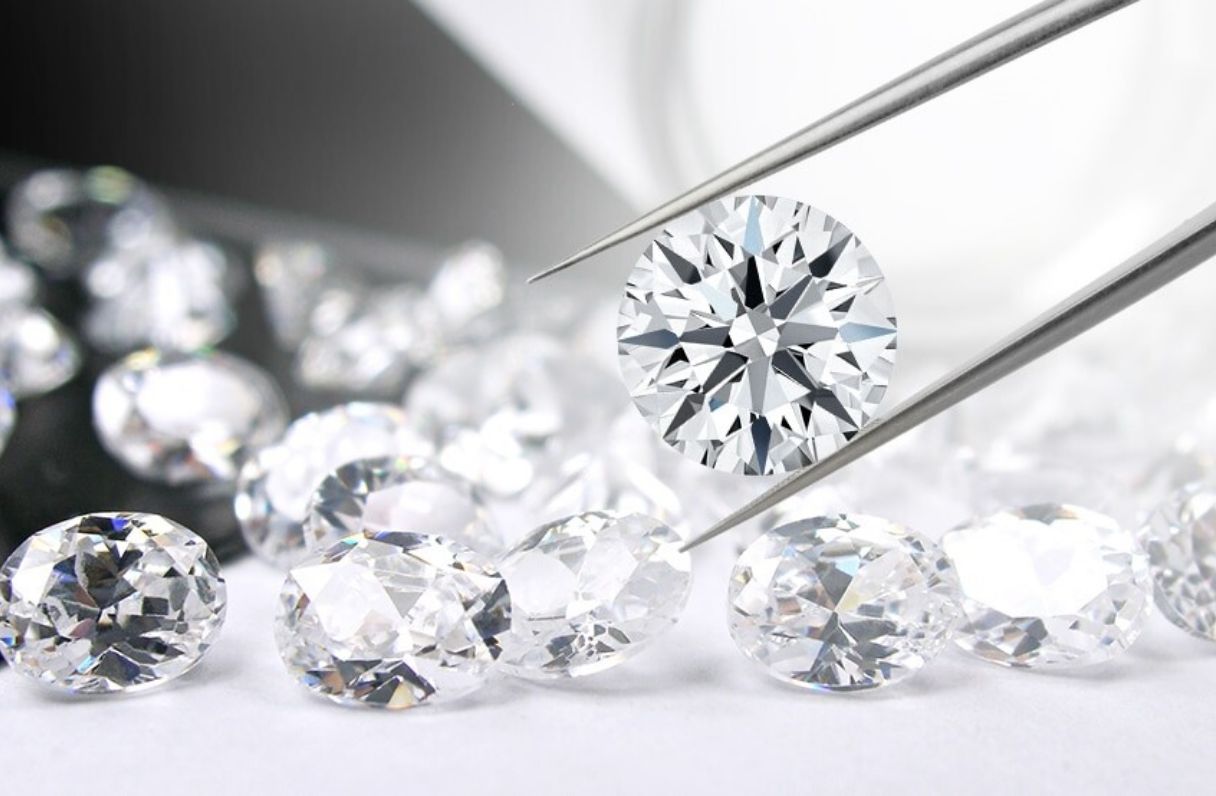In the evolving world of gemstones, lab grown diamonds vs real have arisen as a significant player, challenging the traditional dominance of natural diamonds. As shoppers become increasingly aware of their environmental and ethical decisions, understanding the distinctions between lab-grown diamonds and natural diamonds is crucial. This article digs into the vital contrasts between these two sorts of diamonds, exploring their formation, characteristics, and implications.
Formation: Nature vs. Innovation
Natural Diamonds
Natural diamonds are formed more than great many years profound within the Earth’s mantle under outrageous tension and temperature conditions. The carbon atoms in natural diamonds arrange themselves in a crystal lattice structure, creating the characteristic hardness and brilliance of these gemstones. This geological process brings about exceptional variations in each diamond, contributing to their individuality and value.
Lab-Grown Diamonds
In contrast, lab-grown diamonds are created in controlled conditions using advanced technological processes. There are two primary techniques for producing lab-grown diamonds: High Strain High Temperature (HPHT) and Chemical Vapor Statement (CVD). The HPHT technique simulates the natural circumstances under which diamonds form, while CVD involves the statement of carbon atoms onto a substrate to develop diamond crystals. The two techniques produce diamonds that are chemically and physically identical to natural diamonds.
Physical and Chemical Properties
Identical Characteristics
Lab-grown diamonds and natural diamonds share the same physical and chemical properties. The two sorts of diamonds are made out of unadulterated carbon atoms arranged in a crystal lattice structure, giving them their exceptional hardness and brilliance. They show the same optical properties, including fire, scintillation, and sparkle, which are vital to their allure.
Identifying Contrasts
While lab-grown and natural diamonds are indistinguishable to the naked eye, gemologists utilize specialized gear to recognize unpretentious contrasts. Natural diamonds may contain inclusions or traces of other minerals that formed during their geological excursion, while lab-grown diamonds could display development patterns or metallic inclusions characteristic of their artificial creation. Advanced gemological strategies, like spectroscopy and fluorescence analysis, can assist with differentiating between the two.
Ethical and Environmental Considerations
Natural Diamonds
The mining of natural diamonds has been associated with various ethical and environmental issues. Worries about the impact of diamond mining on local environments, labor conditions, and struggle financing have provoked a push for greater transparency and mindful sourcing. Efforts like the Kimberley Process aim to guarantee that diamonds are without struggle, yet challenges remain in completely addressing these worries.
Lab-Grown Diamonds
Lab-grown diamonds offer a more environmentally well disposed and ethically sound alternative. The controlled creation process decreases the environmental footprint compared to traditional mining. Additionally, lab-grown diamonds eliminate concerns related to struggle and unethical labor practices, as their creation is led in a controlled and regulated climate.
Market Value and Pricing
Natural Diamonds
Natural diamonds have for quite some time been associated with renown and extravagance, frequently commanding more exorbitant costs because of their rarity and the historical significance of their natural formation. Factors like size, color, clarity, and cut determine the value of natural diamonds, with larger and better stones achieving premium costs.
Lab-Grown Diamonds
Lab-grown diamonds generally offer a more practical choice compared to their natural counterparts. The absence of broad mining operations and the ability to control the creation process add to bring down costs for lab-grown diamonds. Customers can frequently purchase a larger or more excellent lab-grown diamond for the same cost as a smaller natural diamond, providing greater value for their investment.
Purchaser Inclinations and Patterns
Traditional Appeal
Natural diamonds continue to hold significant appeal for many shoppers because of their traditional value and representative meaning. They are frequently associated with important life altering situations, like engagements and weddings, and their rarity adds to their allure.
Growing Popularity of Lab-Grown Diamonds
Lab-grown diamonds are gaining popularity among shoppers seeking ethical and sustainable decisions. As awareness of environmental and ethical issues increases, more individuals are considering lab grown diamonds as a viable and attractive alternative to natural diamonds. The advancements in innovation and the increasing variety of lab-grown diamond choices are further driving their acceptance in the market.
Conclusion
Lab-grown diamonds and natural diamonds each proposition interesting advantages and considerations. Natural diamonds, with their geological history and traditional value, remain an image of extravagance and rarity. Then again, lab-grown diamonds present a cutting edge, ethical, and environmentally cordial alternative, appealing to buyers who prioritize sustainability and capable sourcing.



